Take a stroll with me down long air-conditioned corridors of eccentric memorabilia, decor, antiques, and junk. The free samples of lavender lemon essential oils from the left dilute the smell of stale leather from the vendor on the right. Two more steps forward, and you hit the strong peanut butter fragrance of the fudge stall. These hallways are endless, and time stops as we weave through the stuffy crowd of shoppers scavenging for something to haggle. Trader’s World Flea Market is a circus where agricultural gaudiness meets midwestern desperation. And yet, we love it. We love the food court with the old lady maid statue, Matilda, and the parade of plastic wide-eyed giraffes at the entrance, and the barbershop full of wigs and never customers.

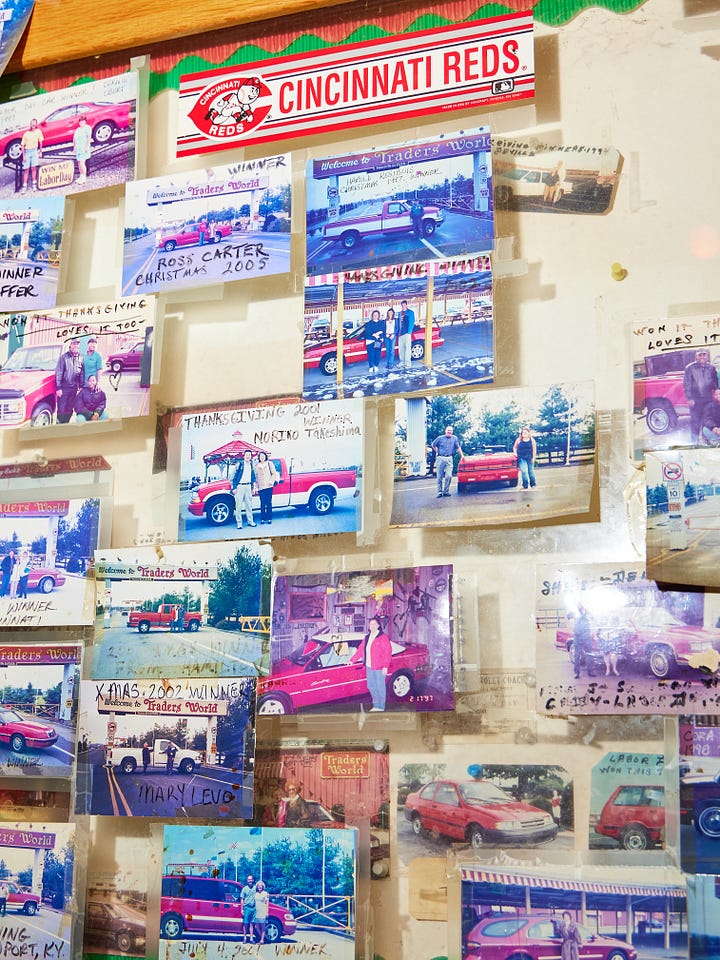
Jay and Helen Frick opened Trader’s World in 1984 and it was soon tagged as the “largest and most colorful market in the Midwest.” They both came from agricultural backgrounds during the Great Depression, but naturally with a childhood of scarcity, they had dreams of innovation and entrepreneurship. I believe the flamboyant character of Trader’s World represents the jolly, abundant future they had finally created for themselves. Their light at the end of the tunnel. The 120 acres of land where the market now sits was purchased in 1963 as the Warren County section of I-75 was opened to drivers. Highways completely reshaped America’s movement of people and goods, and so the road for Trader’s World in rural Lebanon, Ohio was paved.
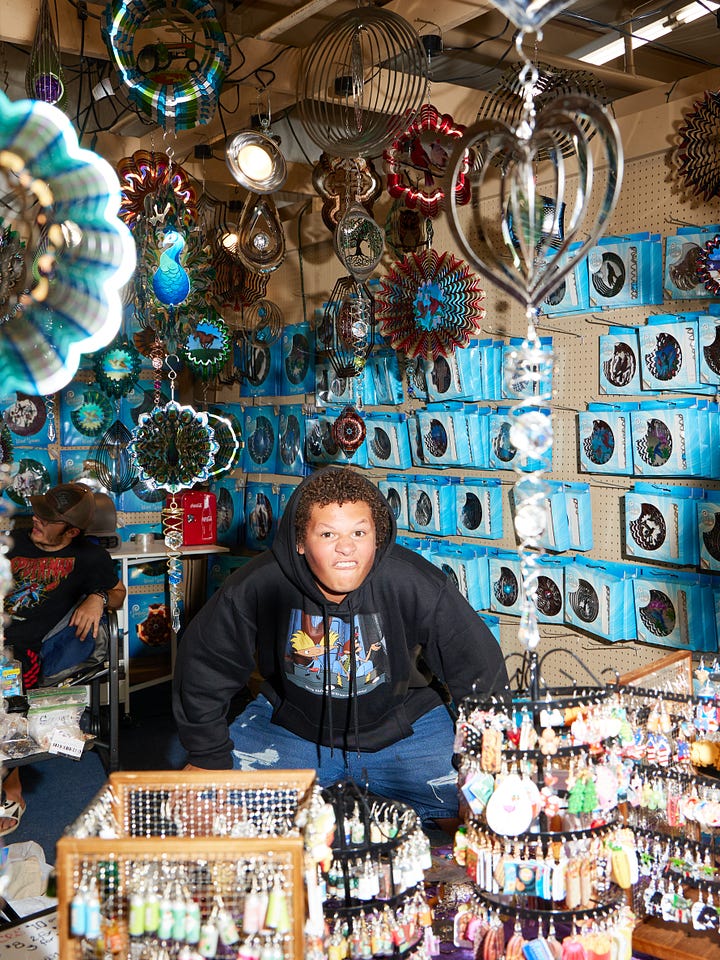

Even the arrival at Trader’s World was an experience. At the entrance stands a towering gate with a red rearing horse statue and several colored palm trees. My grandpa had a friend, Ralleigh, who sold and traded Case knives in a booth he rented for several years. We would park in the same spot by Ralleigh’s booth door, like it was specially reserved for us. I’m not sure how long we would spend there each weekend, but the people watching put me in a trance. I was 4, maybe 5, sitting behind the glass display cases staring back at the faces marveling at shiny knives and fancy Zippo lighters. At the end of the day, I remember expertly navigating through the dense crowd, making my way towards the coveted giant chocolate chip cookie that was pinky-promised to me after each Saturday shift.
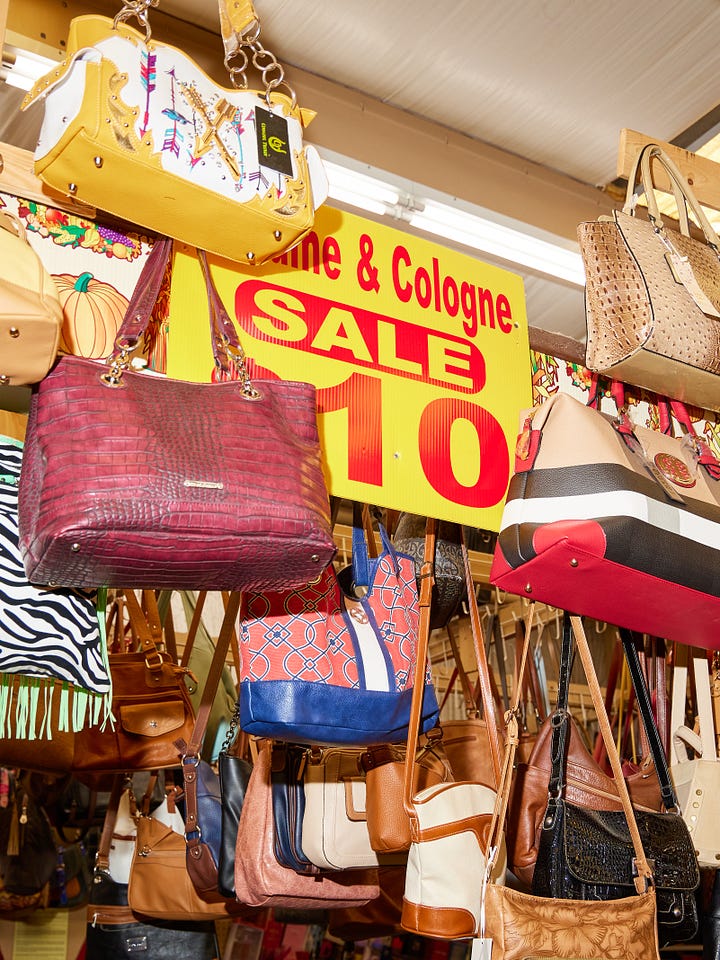
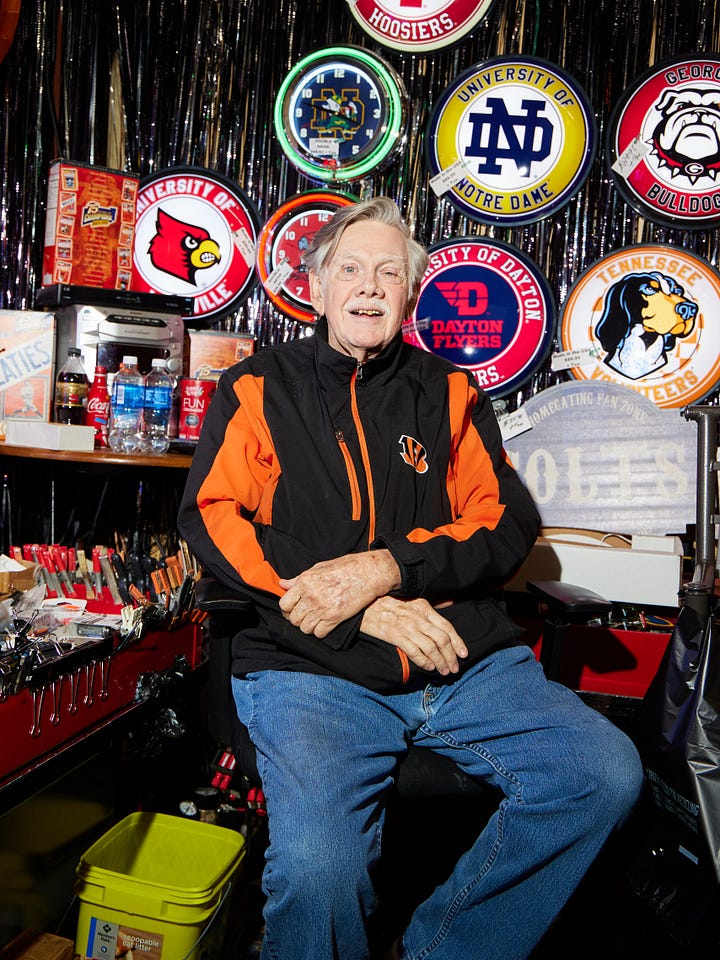
It’s beautifully sad to return to a place that has been kept sacred in memory. I hope some weekends now are busier than others, and the chatter still competes with the murmur of the air vents above. When I went there last fall, the cold wind swept off my rose-colored glasses, and I was faced with its ineluctable decay. Jay and Helen opened Trader’s World with the promising arrival of the interstate highway. They foraged a community: a happy place filled with happy decor, welcoming happy people. It’s where you could get your kids soft serve ice cream, your cousin steel-toed boots, your mom a wind chime, and your uncle a Bengals-themed clock for his basement. And while these things are still true, I found more empty booths than occupied ones.


I don’t believe in its plastic permanence, but I believe it will remain a special place on the side of the highway. My nostalgic ache for the Trader’s World of years past is the same felt for my childhood bedroom or my grandma’s brownies. It’s not an ache that asks to be solved; it’s an era that has come and gone. But while it still stands with us, you should pay it a visit. Take your camera and snap photos of its quirks and its history. Remember it as the dream of Jay and Helen Frick and not as place where a few too many white conservatives try to sell you broke down vaccumes.
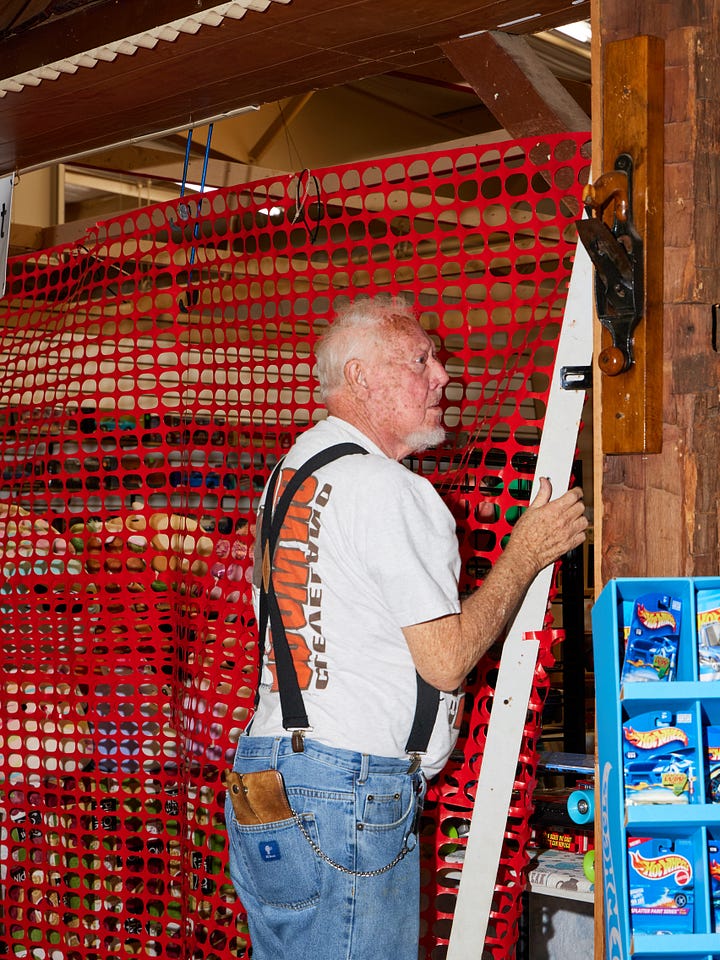

PS: I wanted to somehow mention the companion of Trader’s World from across the highway, “Touchdown Jesus,” that famously got struck by lightning and burned down in 2010. But alas, it didn’t make the cut. May He rest in pieces.




